Hangeul: the Creation of Kings
Background: Hangeul [Hangul] is the Korean alphabet that was created by King SeJong the Great in 1443. Hangeul is incredibly systematic and scientific, yet it is not appreciated as much as it should be.
This project is my attempt to educate others of the logic and methods, as well as the history and meanings behind the development of Hangeul, in order to inspire new creations based on the same logical fundamentals. I felt the need to do a project like this, after realizing that the experience for designing new typography for Hangueul was severely lacking compared to other languages.
The experience is a walkthrough 5 rooms within an exhibition. By navigating through the rooms, visitors are taught different aspects of Hangeul through my own personal attempts at a system. The introductory room is the first room that introduces the exhibition. The next three rooms each have a different theme and attempt. The last room is an interaction room for visitors to interact with the three systems and promote a creation that is parallel to my own attempts.

The side and top view of the model.

The other side of the side and top view of the model.
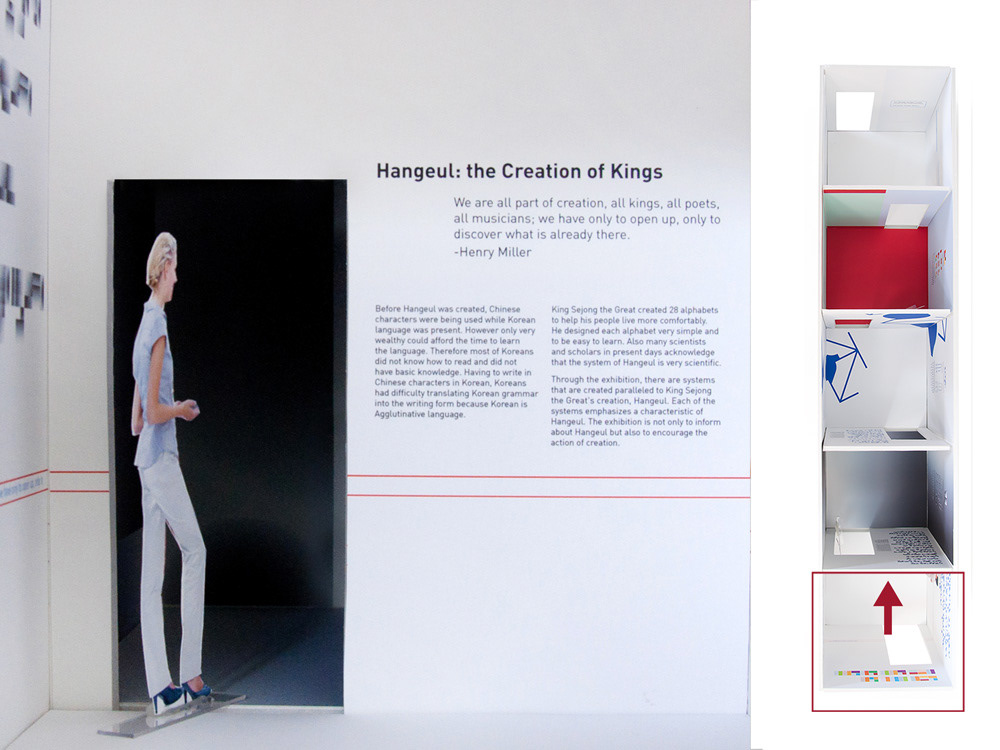
Room 1 - Introductory room: the front wall
This wall introduces the exhibition and Hangeul.

Room 1 - Introductory room: the left wall.
The side and back walls have projections of paragraphs and the translations on the bottom.
They change every few minutes.
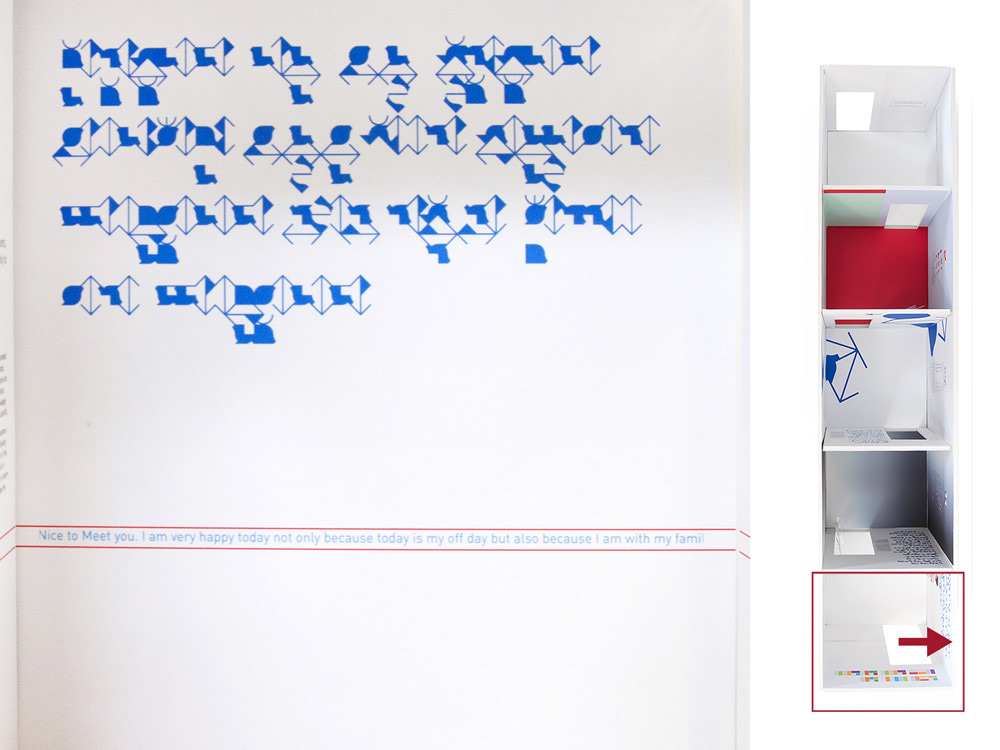
Room 1 - Introductory room: the right wall.
Visitors will understand what the messages are after they go through the exhibition.
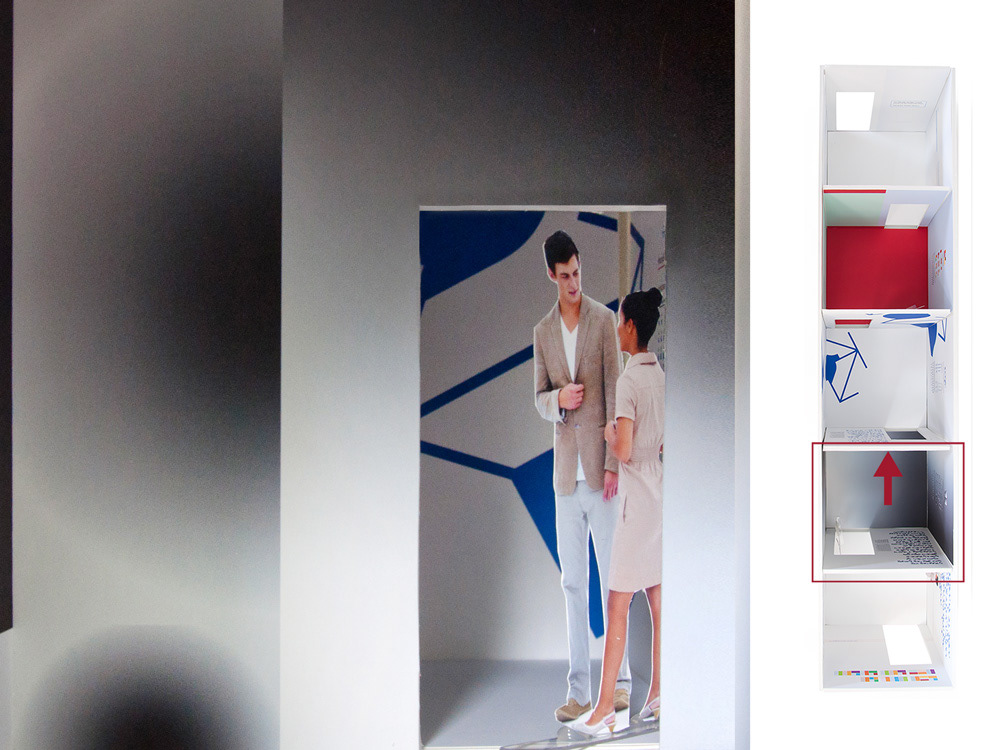
Room 2 - Gradation room: the front wall.
The first impression is to evoke sound visually through gradations on walls.
This room is about how Hangeul is designed inspired by sound.

Room 2 - Gradation room: the left wall.
This wall explains why and how "sound" is a keyword in Hangeul.

Room 2 - Gradation room: the right wall.
This wall explains the relationship between the each character to its sound
by how "Sound" system is built.

Room 2 - Gradation room: the back wall.
This paragraph is from a book, "Proper Sounds for the instruction of the People" (1446),
and it explains how to move tongue, throat, and lips to read Hangeul.

Details of the gradation room.
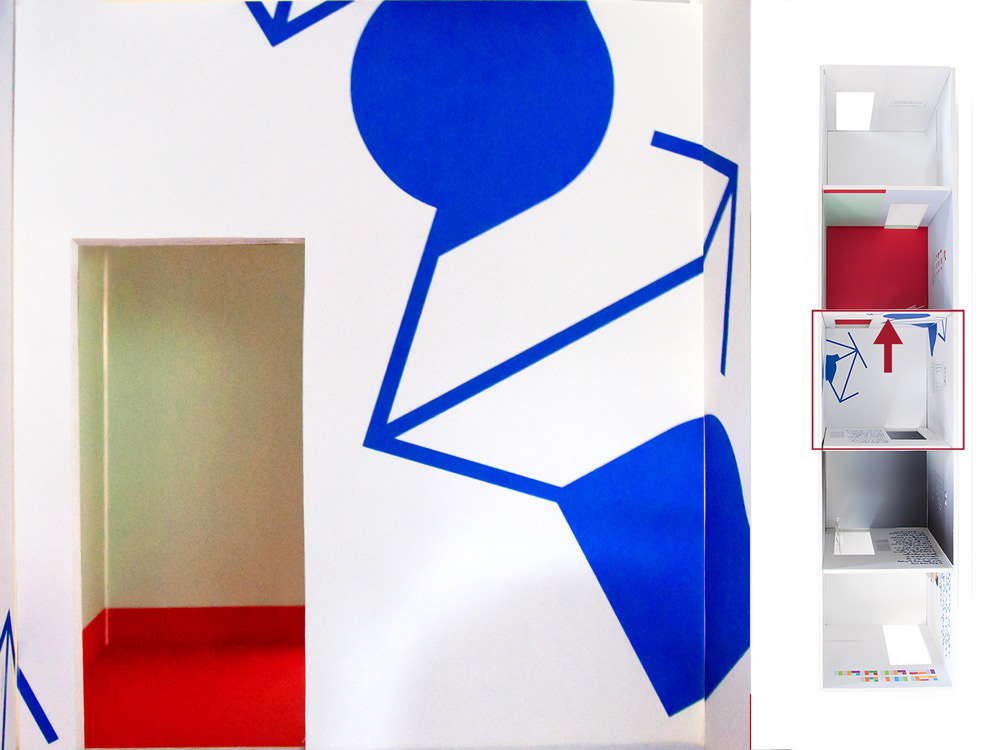
Room 3 - Shape room: the front wall.
The shapes on all around the walls in the room give hints to visitors
that this room is about forms of the Hangeul characters.
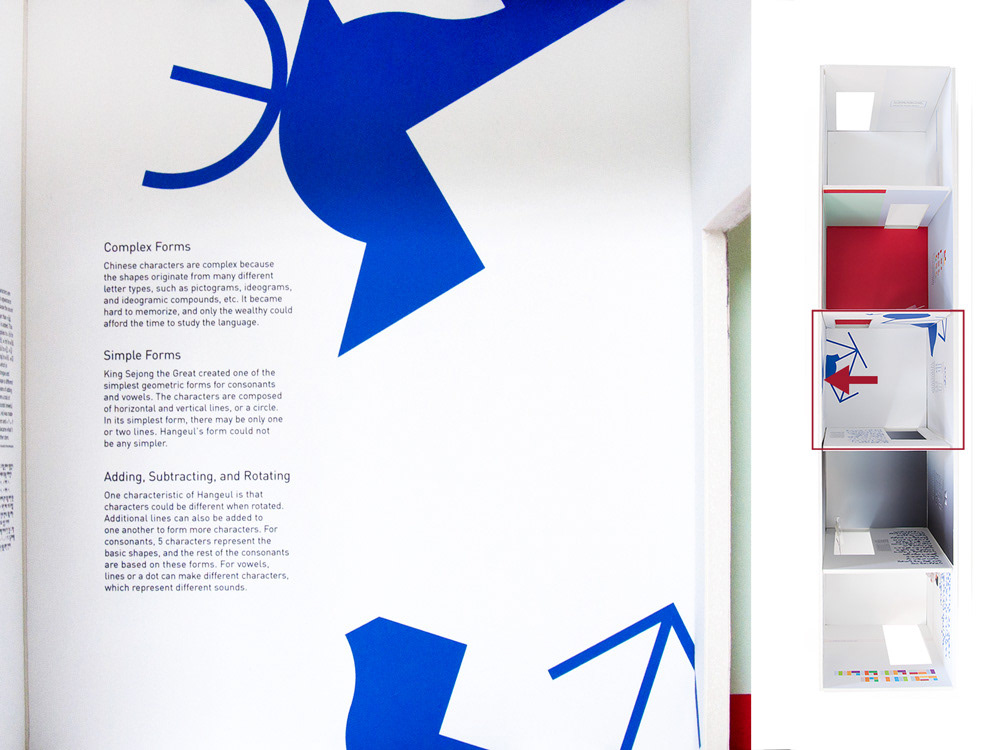
Room 3 - Shape room: the left wall.
This wall explains how and why Hangeul characters are so simple that it cannot be simpler.
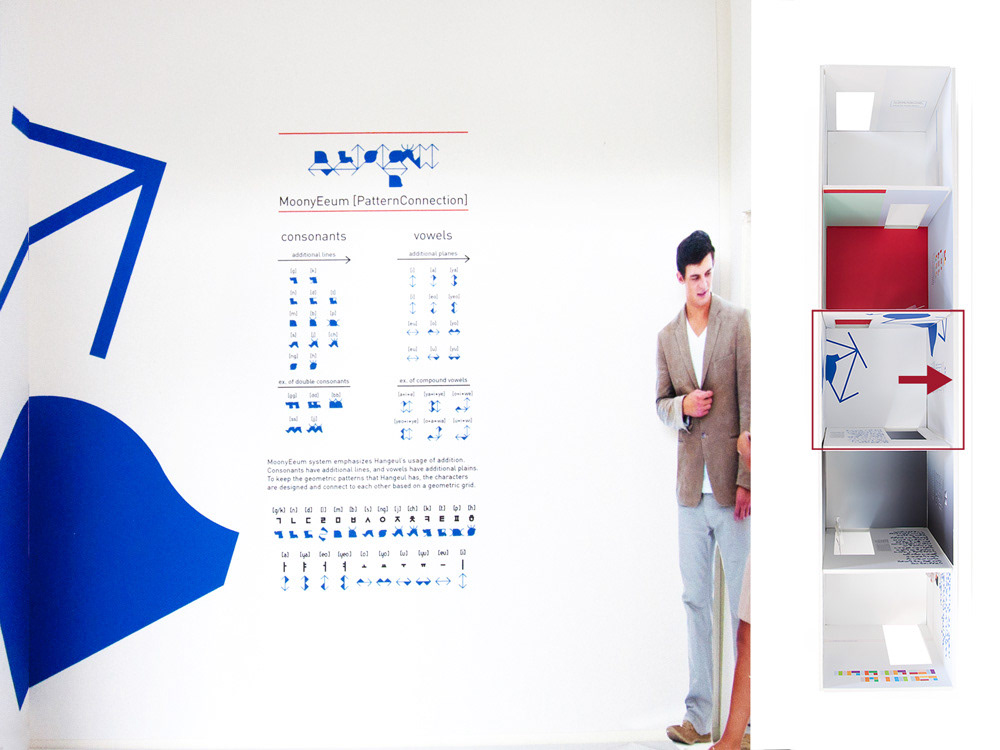
Room 3 - Shape room: the right wall.
This wall explains how Hangeul characters are based on additions, subtractions, and rotations
by explaining what "Pattern Connection" system is.

Room 3 - Shape room: the back wall.
This paragraph, from a book, "Proper Sounds for the Instruction of the People" (1446),
explains how adding a stroke changes in sound in each character.

Details of the shape room.
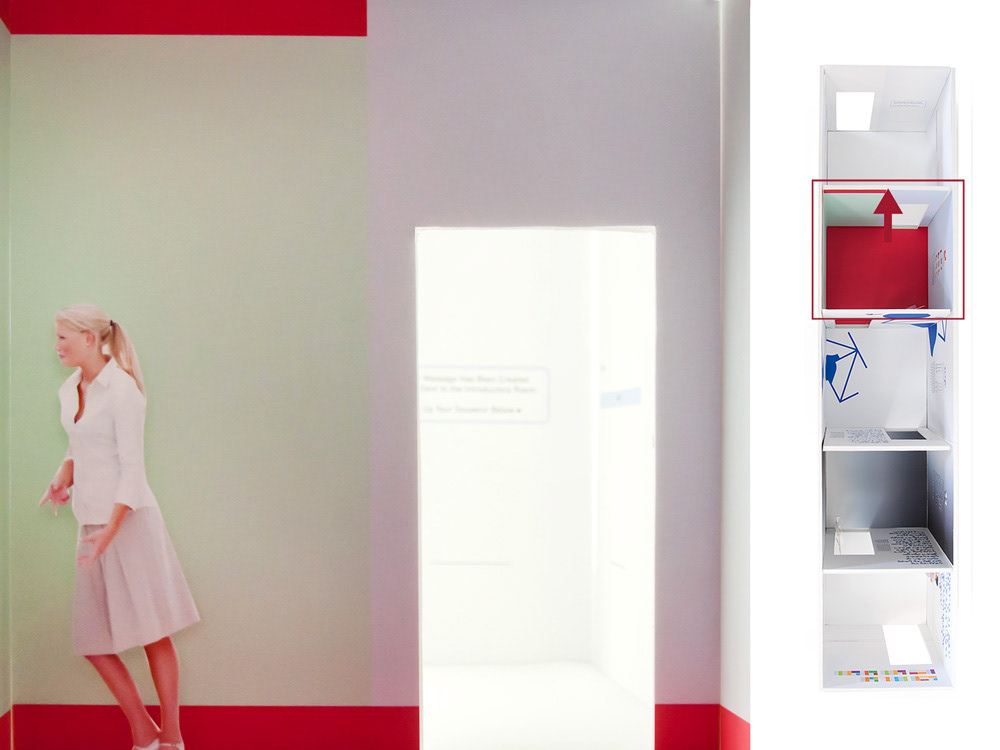
Room 4 - Color room: the front wall.
The room is composed of simple blocks of color,
and this room explains how Hangeul characters come together in a letter.
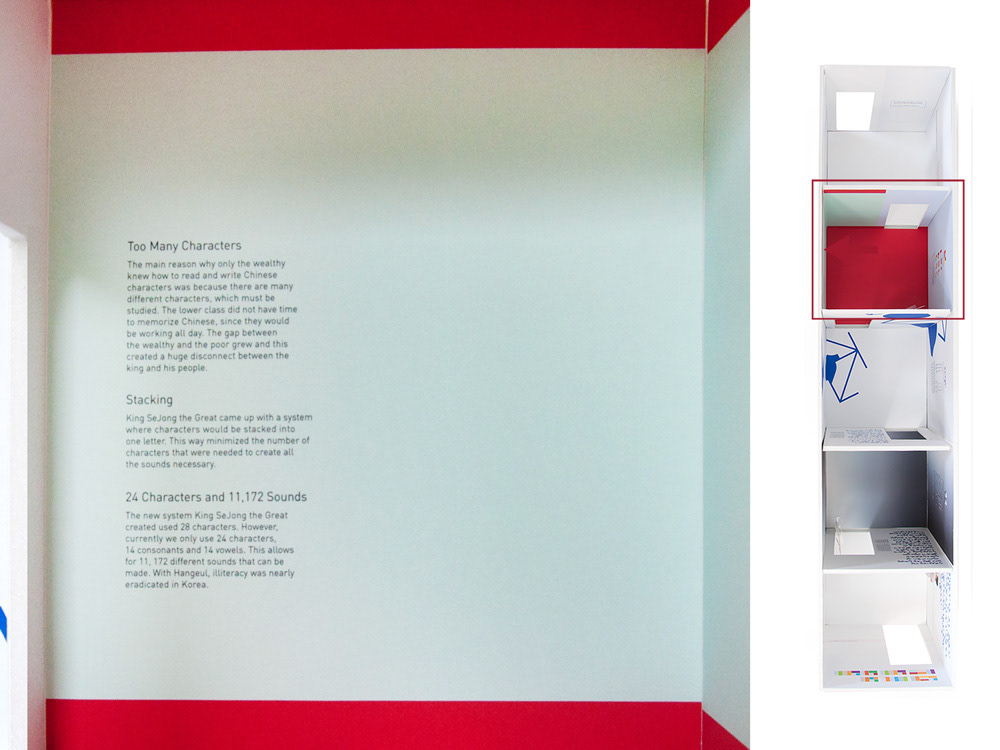
Room 4 - Color room: the left wall.
This wall informs how 24 Hangeul characters make 11,172 sounds.

Room 4 - Color room: the right wall.
This wall explains there are 9 compositions to make a letter
by explaining how "Color" system is made.
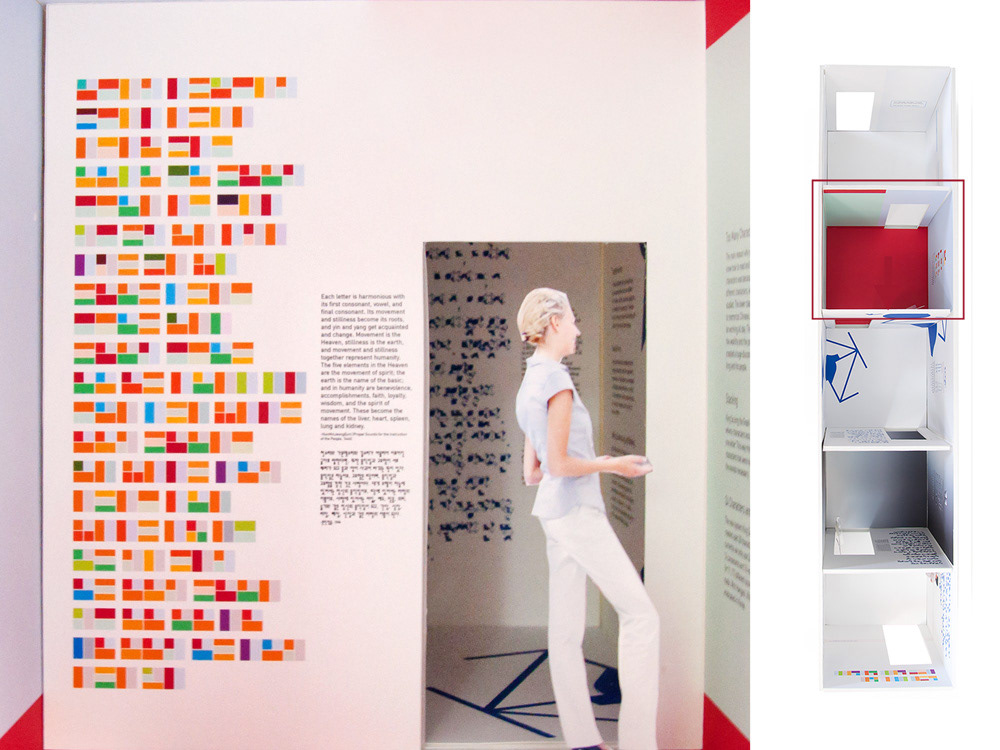
Room 4 - Color room: the back wall.
This paragraph, from a book, "Proper Sounds for the Instruction of the People" (1446),
explains the inspiration and meaning behind the compositions.

Details of the color room.

Room 5 - Interaction room: the back wall.
All the walls are digital kiosks for people to interact.
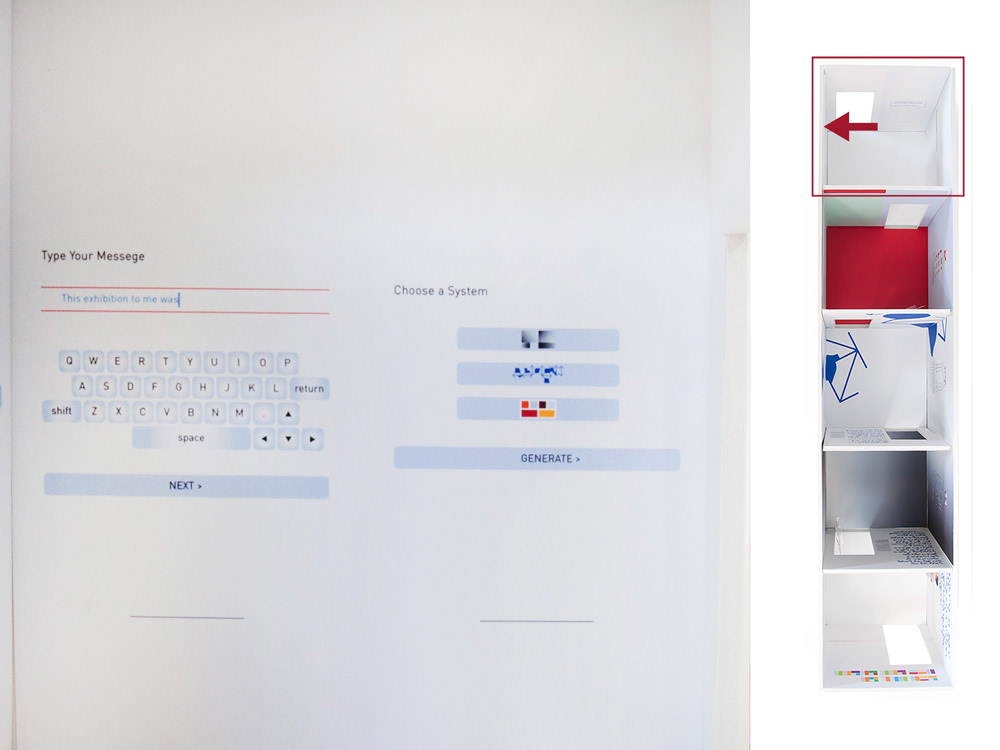
Room 5 - Interaction room: the left wall.
A visitor would start the kiosk and type in a message of his or her own
to generate in one of the three systems from the exhibition.

Room 5 - Interaction room: the right wall.
The kiosk will generate the given message into a chosen system,
and it will print in two forms: one in a paper form as a souvenir for the visitor to take
and the other in a digital form on a wall in the introductory (first) room.
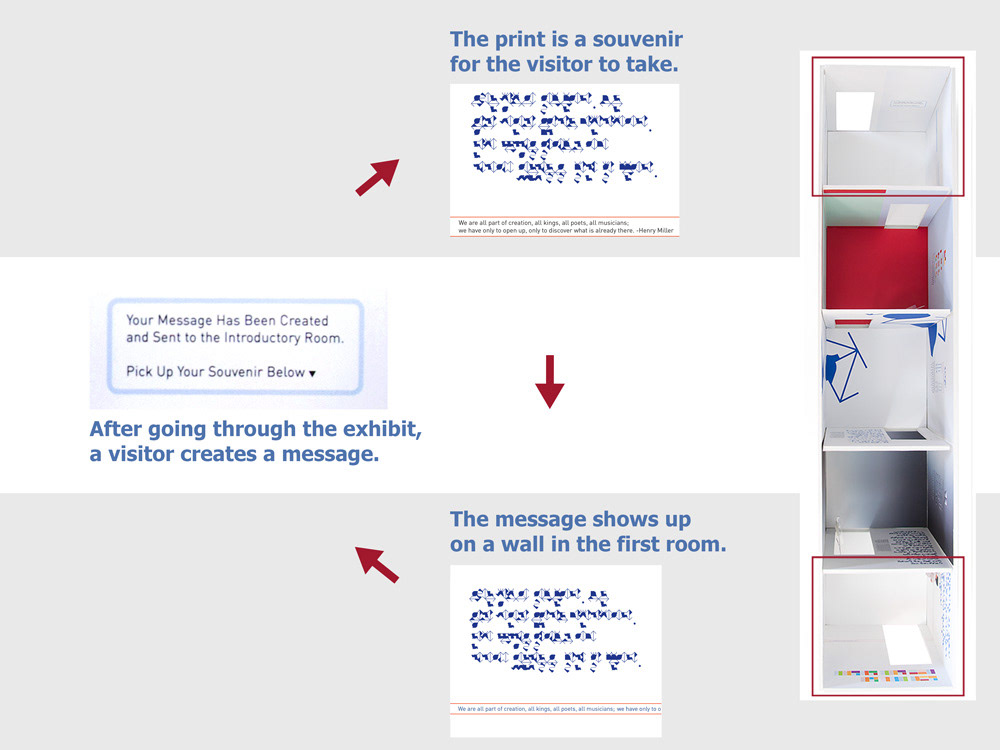
Detail diagram of how interaction room works.




